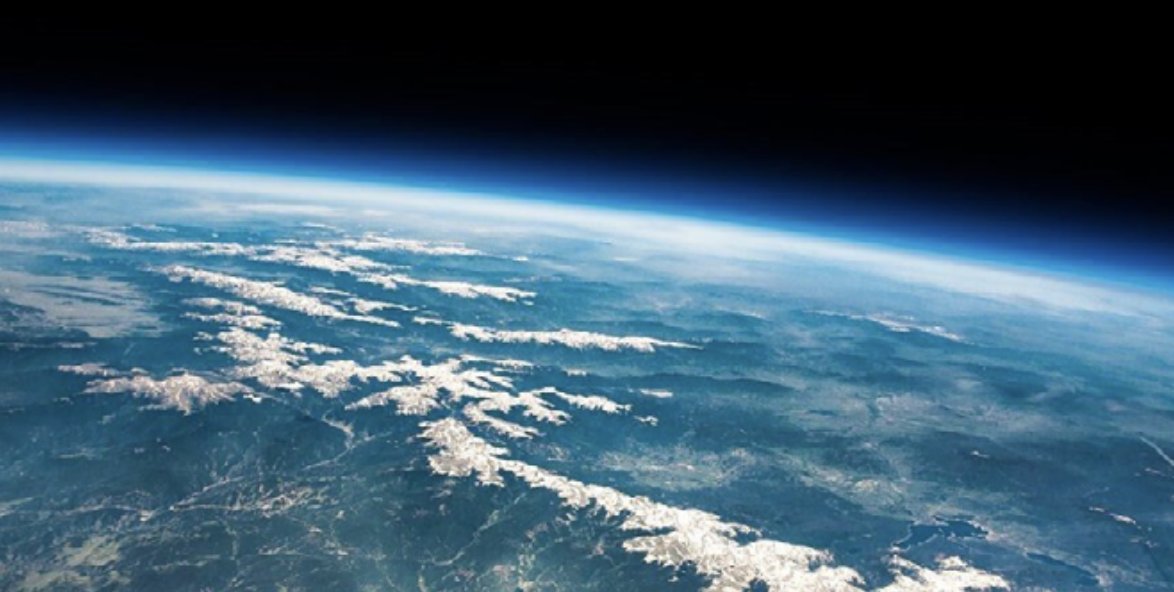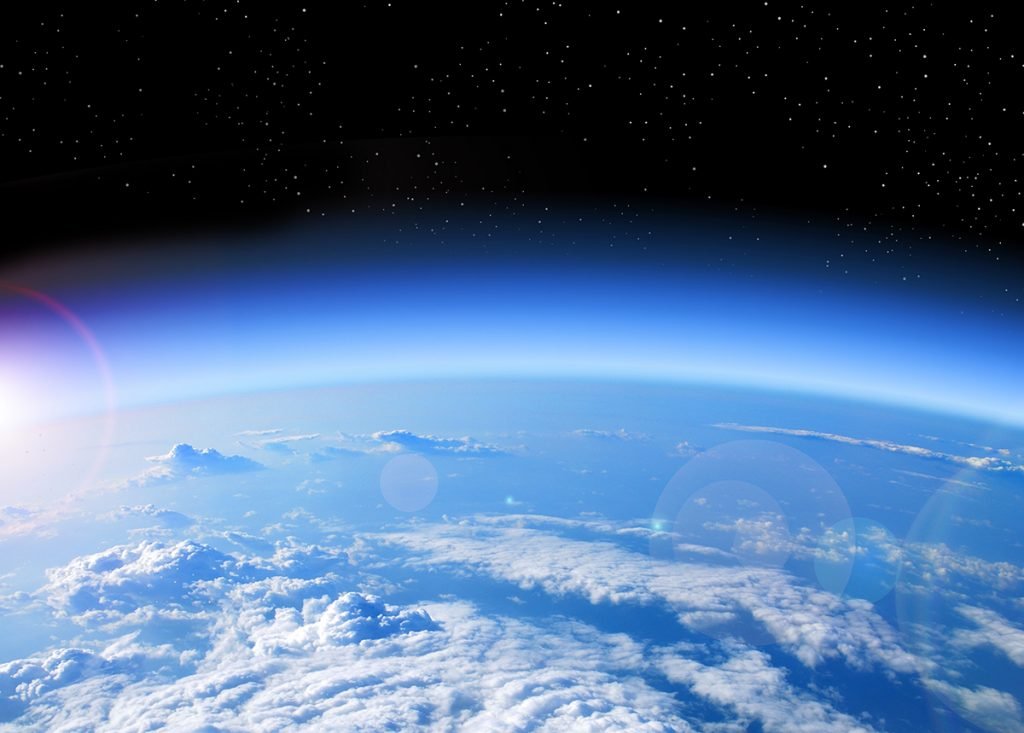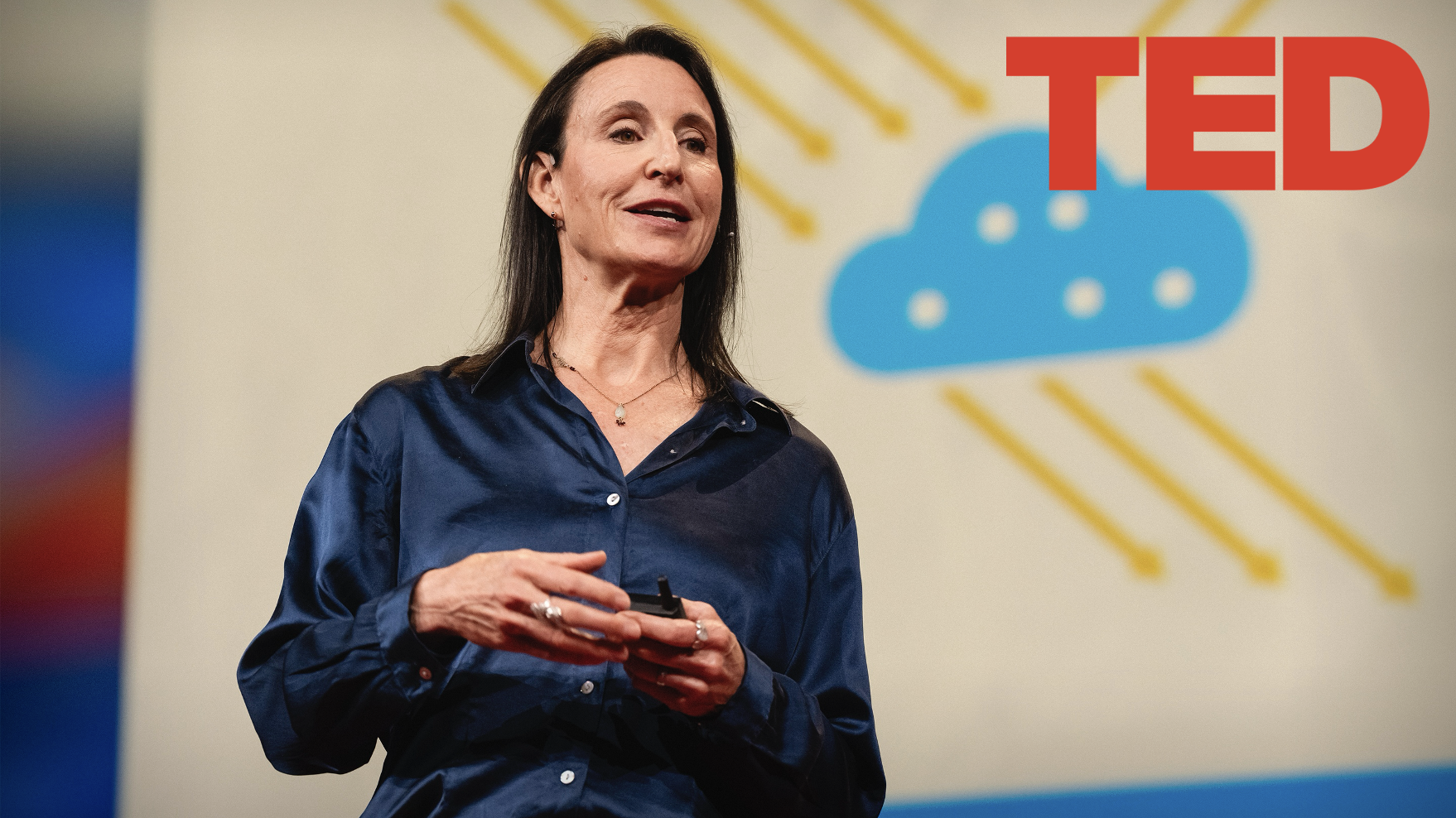Clouds, Aerosols and Coastal Research: A TED Talk from Dr. Sarah Doherty
Dear Friends,
In 2019, I was invited to give a TED Talk on emergency medicine for the Earth system. In the five years since, meterological extremes have escalated in the US and around the world — from Bangladesh to Brazil and Phoenix to Florida — with June breaking more than 1,000 temperature records around the world. As the world warms unusually quickly, these record extremes are accelerating changes in natural systems and devastating people and communities.
The 2019 Talk discussed the fact that greenhouse gases leave the atmosphere slowly such that even in the most optimistic scenarios for emissions, the climate will continue to warm for several decades. It included the then little-discussed fact that particles (aerosols) emitted in air pollution create a temporary cooling effect on climate, offsetting some uncertain — but potentially significant — amount of greenhouse gas warming. Some scientists had begun to pose the question: could a cleaner, safer version of this effect help reduce the catastrophic risks of warming?
Recently, record warming has been partially attributed to steep reductions in aerosol pollution from cargo ships, Chinese factories and other sources, drawing attention to large uncertainties in our quantification of their climate impacts from major gaps in models and observations. Yet investments in the basic science and observation of the atmosphere have declined in real terms over the past few decades.
This decline continues today, even as a growing number of official bodies, scientists, policymakers, youth and climate advocates have called for research on both the current effects of atmospheric aerosols and approaches to intentionally dispersing aerosols to increase the reflection of sunlight to cool climate, sometimes called ‘solar radiation modification’ (SRM).
Earlier this year, SilverLining joined the University of Washington, the top institution for atmospheric science globally, in a collaborative, non-profit, academic effort to advance model representation of atmospheric aerosols. Improving these computer models would improve projections of both the climate effects of particulate pollution and a related, proposed form of SRM, marine cloud brightening.
The Coastal Atmospheric Aerosol Research and Engagement (CAARE) effort involves the use of small-scale, outdoor studies of a sea-salt aerosol plume to improve models of the atmosphere. Similar small-scale outdoor studies are a longstanding part of environmental protection research. Undertaking the studies in the open, public environment of the USS Hornet Sea, Air and Space Museum in Alameda, California, afforded an opportunity to bring the public closer to research that is often misunderstood but that has implications for all of society.
In April, at the TED2024 conference, atmospheric scientist Dr. Sarah Doherty, gave a powerful TED Talk on the CAARE effort, which she co-leads. We are pleased to share this with you as part of our efforts to engage you and others with research that might help us all be better informed when anyone proposes or undertakes these climate interventions at large scales.
While found to be safe in official public health and environmental reviews, the CAARE studies were not approved locally in Alameda. We understand that the debate around SRM is complex and want to express our desire to continue identifying the appropriate safeguards for scientific field studies. We recognize the challenges to building shared understanding of the research, science and societal considerations in these areas. We hope to help overcome these challenges with the transparent and open museum-based approach taken by CAARE.
We are grateful for the support we received from many people, including Indigenous People, youth, scientific and political leaders and members of the Alameda community. Many who were able to experience the research, and many who read about it, were inspired by its potential to promote science, engagement and learning and to provide information on options for responding to climate change.
As climate warming increases direct harms to people, there is a great deal at stake in having shared information on possible options to reduce risks. Last week, public health and atmospheric scientists Anna Bershteyn and Michael Diamond published an eloquent opinion piece in CNN on this that we also wanted to share with you.
We believe that small-scale sea-salt aerosol studies are important for climate science and a valuable way for the public to engage toward informed and meaningful dialogue and consent. We are grateful for the outpouring of support and look forward to the next steps in the work.
Kelly Wanser
Executive Director, SilverLining
Particulate emissions from ships produce bright tracks in clouds over the Pacific Ocean. Credit: NASA
Pollution Aerosol Reduction and Recent Warming
Scientists have long known that particulates (also called, ‘aerosols’) from natural sources (dust, sea-salt) and from air pollution play a role in cooling the climate both by reflecting sunlight directly and by brightening clouds. Pollution aerosols offset greenhouse gas warming, with estimates of their cooling effect ranging from 0.2 to 1.1℃. This highlights the uncertain amount of additional warming we will experience as we continue to reduce air pollution to improve public health over the next 10-20 years. New studies, including from climate scientist James Hansen, suggest that the unexpected recent increase in warming is in significant part the result of decreasing aerosol pollution, including a reduction of SO2 aerosol emissions from ships following the new regulations on fuel sulfur content imposed by the International Maritime Organization (IMO) in 2020.
The role of aerosols in cooling the climate is one of the largest unsolved problems in climate science. There are large and longstanding uncertainties in model projections of these effects, arising from substantial gaps in the representation of aerosol-related processes in climate models. This severely limits society’s ability to assess the near-term warming risks of reducing pollution or the effects of intentionally brightening the atmosphere and clouds with cleaner sea-salt aerosols. Closing these gaps is now a matter of urgency.
Researchers use higher resolution (“cloud-resolving”) computer models to simulate how clouds respond to aerosols locally to inform projections of the effects on climate globally.
Modeling Pollution Aerosols and Marine Cloud Brightening
Improving our understanding of the influence of aerosols on clouds and climate is essential to understanding near-term climate risks, and to determining whether marine cloud brightening could safely help reduce them. As humans consider making changes to our aerosol emissions — either reducing them to improve air quality, or adding them to reduce climate warming — we need a stronger scientific understanding of these processes in order to inform decisions on how to move forward and to monitor and regulate aerosols with respect to climate.
However, as Dr. Hansen notes, “simulating the highly nonlinear effects of aerosols on clouds is challenging.” Aerosol-cloud modeling is still developing, with both the expression of the processes and the impact of aerosols on clouds and climate varying significantly among different climate models. As a result, global-scale models vary significantly in their simulation of how much cloud brightening is possible in different regions, limiting our ability to identify realistic implementations of marine cloud brightening.
Many studies to date have included unrealistically large amounts of cloud brightening, in order to amplify and better discern climate responses. In some cases these studies have led to implausible conclusions about how MCB could realistically affect climate impacts. In other cases, these studies have helped identify what would clearly be undesirable implementations of MCB –– an important finding in and of itself. Still, what constitutes ‘realistic’ MCB implementations and projections of their impacts is yet to be determined, due to limited information on how clouds respond to aerosols under different conditions.
Greatly expanded measurements of aerosol and cloud properties are urgently needed to better define the effect of aerosols on climate. Because of the complexity and variability of aerosols and their environment, passive, opportunistic observations of existing aerosol effects alone may not be sufficient. Because both aerosols in the atmosphere and meteorology that influences their behavior is heterogeneous and complex, one powerful approach to characterizing atmospheric aerosol processes and improving models is the study of aerosols and clouds through controlled small-scale release of sea salt aerosols.
Credit: University of Washington Creative Commons
The Science of CAARE: An Advanced Facility for Atmospheric Research
To support small-scale outdoor research on the basic science of aerosols in the marine atmosphere, as well as its objectives of fostering scientific collaboration and public engagement, the University of Washington Marine Cloud Brightening Program launched the Coastal Atmospheric Aerosol Research and Engagement (CAARE) facility, designed to:
support scientific studies of the evolution and transport of aerosols in the marine atmospheric boundary layer, in service of improving model representation of aerosol-cloud interactions, by our team and by other research teams globally;
provide information and tools for environmental and regulatory evaluation of aerosol releases;
inform models to support projections of the impacts of marine cloud brightening and to provide “off-ramps” for marine cloud brightening research, as recommended by scientists convened by NOAA.
The CAARE studies involve brief emissions of salt-water that evolve into a plume of tiny sea salt particles whose number, size and path are measured by instruments installed downwind of the aerosol source. (The study design is available here.) The studies are not at a scale that can alter clouds or any aspect of the local weather or climate and they are not cloud brightening, weather modification or ‘geoengineering’ experiments. The type of studies conducted at the CAARE facility are similar to those in other areas of environmental research. They are a way for scientists to study how pollution is transported in the atmosphere, but using a natural aerosol, in to be able to project aerosol effects at larger scales. For climate interventions, this type of study is designed to help improve models to be able to understand, project and make decisions about any activities that might be proposed at larger scales, including experiments that would have a significant impact on the environment.
The CAARE researchers are committed to rigorous, objective, transparent and accessible research to help society make equitable and effective decisions about these approaches in the context of increasingly dangerous climate risks. The stakeholders in CAARE do not support or endorse experiments undertaken at scales that would significantly impact the environment or in any way endorse the use of SRM.
Engagement with CAARE: Direct Experience and Education
This new facility was launched at the USS Hornet Sea, Air and Space Museum, a Smithsonian Affiliate, in Alameda, California. The public museum environment supports CAARE’s goals of student, community, and broad public engagement.
Ghanaian climate advocate Joshua Amoponsem engages with scientists and engineers on CAARE science and technology.
Having the studies integrated as part of a museum exhibit provides the public with direct access to scientific research that is typically only available to a small group of scientists. The resulting opportunities include:
providing a means of direct engagement for the public and other stakeholders, including Global South communities, Indigenous Peoples, youth, and historically underserved communities who are often the most vulnerable to climate change with science and technology in a way that can help support informed dialogue and input to decision-making;
providing educational experiences on atmospheric and climate science that bring science to life;
supporting focused stakeholder engagement and dialogue on research with societal implications.
SilverLining team members, visiting scientists and youth leaders view a demonstration of the sea-salt spray studies.
Value for Society: Equitable, Informed Decision Making
In 2023, governmental and intergovernmental bodies published official reports calling for research and assessment on the potential for SRM approaches like marine cloud brightening to reduce catastrophic climate risks and impacts. In addition, the World Climate Research Program (WCRP), an international scientific coordination body whose research informs the climate science that underpins the United Nations Framework Convention on Climate Change, established a Lighthouse Activity (LHA) program on climate intervention research.
Small-scale, controlled studies designed to improve models of the aerosol effects are increasingly critical to improving tools for planning and responding to the coming decades of climate change in a way that will better protect people and ecosystems while also helping to inform equitable research and effective governance on the potential for climate interventions.
Undertaking research in an open, accessible environment such as the CAARE facility has the potential to bridge a critical and concerningly large knowledge gap on aerosol impacts on climate and the nature of climate and SRM field research. It could also help enable scientists from the many regions of the world without these specialized research capabilities to equitably participate in research, to provide more informed perspectives, and to assess the climate risks and benefits of aerosol influences for their regions. Open access to this type of research is crucial to support societal engagement with and understanding of the realities of climate intervention and informed dialogue, decision-making and consent on any use of SRM climate interventions in the future.














